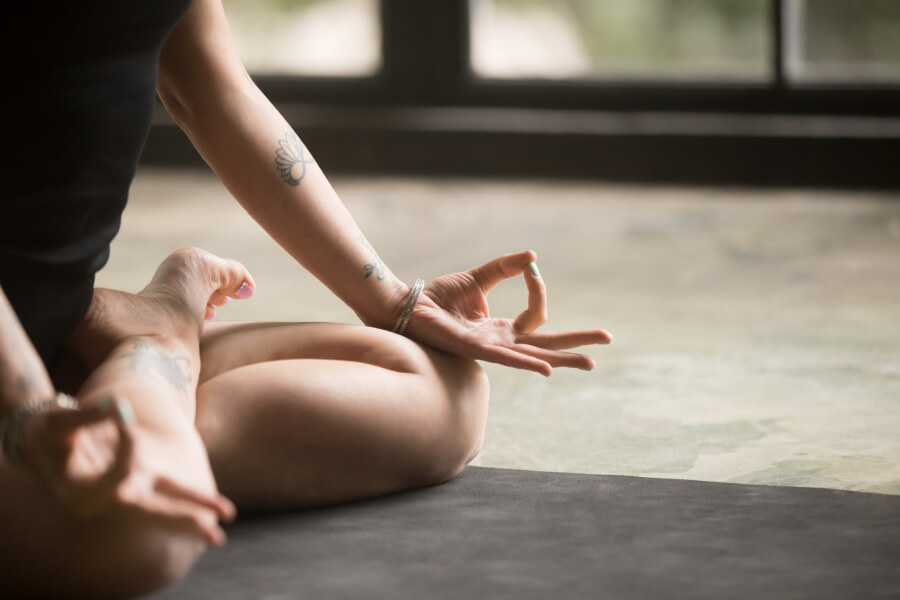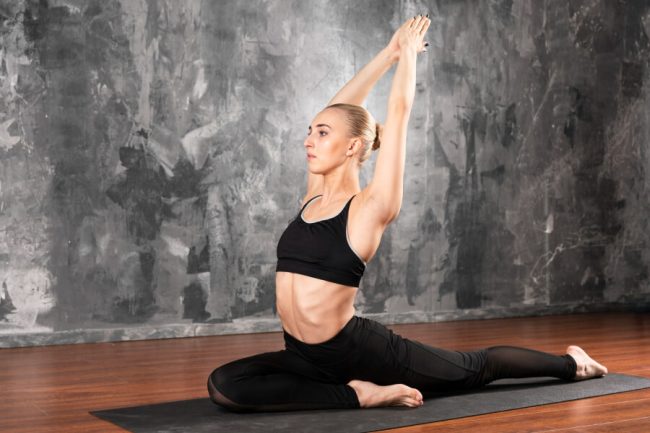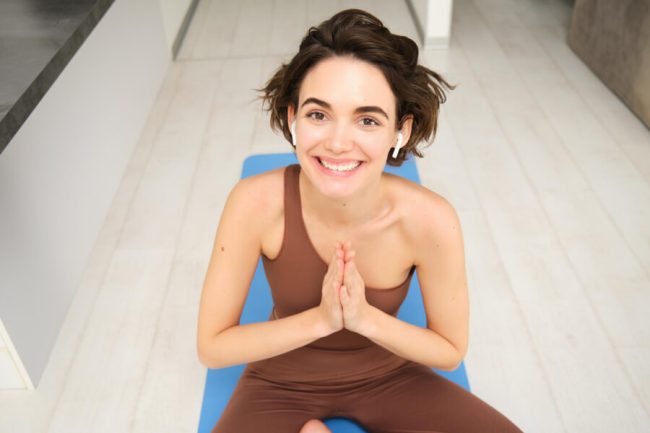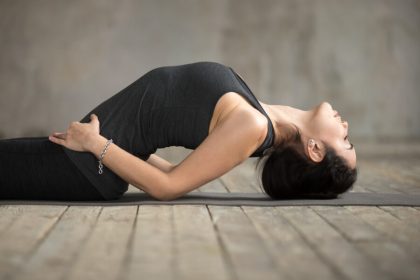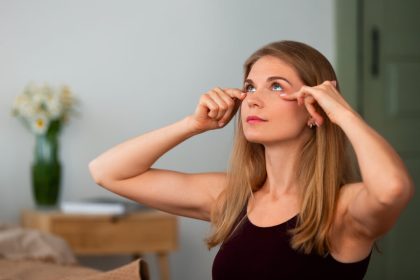If you’re new to yoga, you may be feeling overwhelmed by the numerous yoga types available. With so many styles, it can be tricky to figure out which one best suits your personal fitness goals, lifestyle, and preferences.
Don’t worry! This guide will introduce you to various yoga types and help you decide which one is right for you.
Whether you’re looking to increase flexibility, build strength, relax your mind, or find a practice that fits your lifestyle, understanding the differences between yoga types can empower you to make an informed choice.
How Yoga Started in First Place?
Before discussing yoga types, it’s important to have a foundational understanding of what yoga is all about.
Yoga began in ancient India thousands of years ago and has evolved to become a diverse practice.
At its core, yoga is a discipline that unites the body, mind, and spirit through physical postures (asanas), breath control (pranayama), and meditation.
The Origins of Yoga and Its Evolution
Yoga originated as a spiritual practice and gradually transformed into a holistic system that adds physical movement.
Today, yoga types cater to a wide range of people, from beginners to advanced practitioners, with various focuses such as fitness, mental health, and relaxation.
The Core Principles and Philosophies Behind Yoga
Despite the variety of yoga types, they all share certain core principles:
- Breathing (Pranayama): Breathing exercises are fundamental to many yoga types, helping to focus the mind and regulate energy.
- Postures (Asanas): Yoga poses are designed to increase strength, flexibility, and balance.
- Mindfulness: Most yoga types encourage a state of mindfulness and present-moment awareness, enhancing emotional well-being.
Understanding these principles will give you a deeper appreciation of the various yoga types and their health benefits.
What Are Popular Yoga Types
Now that you know the basics, let’s explore some of the most popular yoga types that you may want to try.
Hatha Yoga: The Foundation of All Yoga Types
Hatha Yoga is often considered the foundation for many other yoga types. It focuses on holding basic postures while emphasizing breathing and alignment. Hatha is slow-paced, making it an excellent starting point for beginners.
- Benefits: Increases flexibility, builds strength, and promotes relaxation. Perfect for those new to yoga.
Vinyasa Yoga: Flowing with Breath
Vinyasa Yoga, one of the most popular yoga types, links breath with movement. In this style, you transition smoothly between poses, synchronizing your movements with your breath.
Vinyasa is dynamic and fluid, making it ideal for those who enjoy movement and a moderate challenge.
- Benefits: Improves cardiovascular health, builds strength, and improves flexibility. Best for those who prefer an active practice.
Ashtanga Yoga: A Dynamic and Disciplined Practice
Ashtanga Yoga is one of the more rigorous yoga types. It follows a specific sequence of poses that must be performed in the same order every time. This practice is physically demanding and builds strength, flexibility, and mental clarity.
- Benefits: Improves stamina, flexibility, and mental discipline. Ideal for those seeking a structured and challenging practice.
Iyengar Yoga: Precision and Alignment
Iyengar Yoga is another one of the detailed yoga types. It focuses on precise alignment in every pose. Props such as blocks, straps, and blankets are used to help practitioners achieve optimal alignment and maximize the benefits of each pose.
- Benefits: Improved posture, flexibility, and alignment. Great for beginners or those with specific physical limitations or injuries.
Kundalini Yoga: Awakening Your Inner Energy
Kundalini Yoga aims to awaken the energy within you, often referred to as “Kundalini.” It adds breathwork, chanting, and dynamic movements to activate this energy, which is believed to reside at the base of the spine.
- Benefits: Improves spiritual awareness, emotional healing, and energy flow. Best for those looking for a deeply transformative and spiritual practice.
Bikram Yoga: A Hot Practice
Bikram Yoga is one of the more intense yoga types, practiced in a room heated to approximately 40°C (104°F).
It involves 26 specific poses and two breathing exercises. The heat helps to detoxify the body and increase flexibility.
- Benefits: Improves flexibility, detoxification, and weight loss. Perfect for those who enjoy a heated, high-energy practice.
Yin Yoga: Deep Stretching and Relaxation
Yin Yoga is a slower-paced practice that involves holding poses for several minutes at a time. This style targets the deep connective tissues, such as ligaments and fascia, rather than just muscles.
- Benefits: Promotes deep relaxation, increases flexibility, and improves joint health. Ideal for those seeking a calming and restorative practice.
Restorative Yoga: A Gentle Healing Practice
Restorative Yoga is one of the gentlest yoga types. It uses props to support the body in passive poses that promote relaxation and healing. This practice is ideal for reducing stress and recovering from physical stress.
- Benefits: Reduces stress, improves relaxation, and promotes healing. Perfect for those needing rest or recovery after physical activity or injury.
Power Yoga: High-Intensity Practice
Power Yoga is a vigorous form of Vinyasa Yoga that builds strength, resistance, and flexibility. It’s one of the more intense yoga types and often involves faster-paced movements to provide a full-body workout.
- Benefits: Builds muscle, increases cardiovascular fitness, and promotes weight loss. Best for those looking for a high-energy yoga practice.
Aerial Yoga: Yoga in the Air
Aerial Yoga involves practicing yoga poses while suspended in a hammock or fabric, allowing practitioners to experience unique movements and stretches. It’s an adventurous style that offers a playful twist on traditional yoga.
- Benefits: Strengthens the core, improves balance, and adds fun to the practice. Ideal for those who want to try something new and adventurous.
Acro Yoga: Partnered Yoga for Connection
Acro Yoga combines acrobatics, yoga, and Thai massage. It’s a partner-based practice that requires cooperation and trust, building strength and flexibility through collaboration.
- Benefits: Builds strength, trust, and teamwork. Great for couples or groups looking to deepen their connection and enjoy a fun challenge.
Prenatal Yoga: Yoga for Expecting Mothers
Prenatal Yoga is designed to help pregnant women maintain their physical health, reduce stress, and prepare for childbirth. It focuses on gentle movements, breathing techniques, and relaxation strategies.
- Benefits: Promotes relaxation, reduces pregnancy discomfort, and prepares for childbirth. Perfect for expecting mothers who want to stay active and calm during pregnancy.
Choosing the Right Yoga Type for You
Finding the right yoga type for you depends on several factors:
- Your fitness goals: Are you looking to increase strength, improve flexibility, or relax? Some yoga types are more focused on building strength (like Power Yoga), while others focus on relaxation (like Restorative Yoga).
- Your level of experience: If you’re new to yoga, it’s best to start with gentler yoga types such as Hatha or Iyengar before progressing to more intense practices like Ashtanga or Bikram.
- Your personal preferences: Do you prefer a more meditative experience (like Yin Yoga) or an energetic workout (like Vinyasa)? Consider what resonates with you.
Conclusion
With so many different yoga types, there’s no one-size-fits-all practice. Whether you want a calming and restorative experience or an intense full-body workout, there’s a yoga style that aligns with your personal goals.
Take the time to explore and experiment with different yoga types to discover the one that suits you best.
FAQs
Which Yoga Style is Best for Weight Loss?
Styles like Power Yoga, Vinyasa, and Bikram Yoga can help with weight loss due to their intensity and calorie-burning potential.
How Can I Combine Different Yoga Styles?
It’s possible to mix and match styles based on your needs. For example, you could do a Power Yoga session for strength and follow it with a Yin Yoga session for deep relaxation.
Are There Risks to Practicing Yoga?
Yoga is generally safe for most people, but it’s important to practice with proper form to avoid injury. If you have health concerns, consult a doctor before starting.
How Often Should I Practice Yoga for Maximum Benefit?
For the best results, aim to practice yoga at least three times a week. However, even once a week can help improve flexibility and reduce stress.

